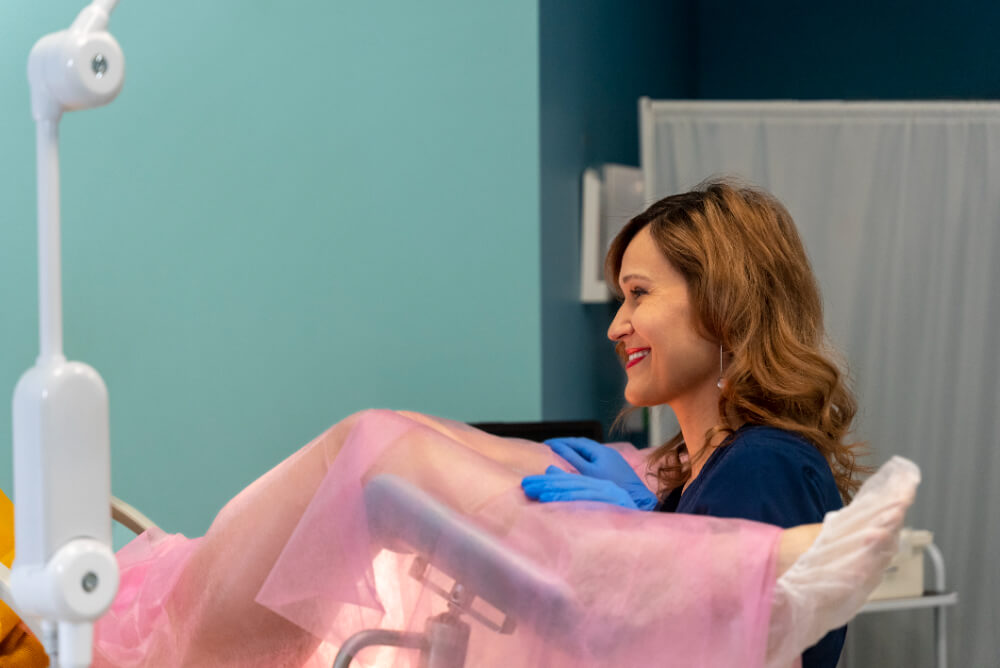For many individuals and couples facing fertility challenges, in vitro fertilization (IVF) can be a path to parenthood.
However, the process can feel overwhelming, filled with medical jargon, multiple appointments, and emotional highs and lows. Taking a tour of a modern IVF center can help demystify the experience and provide a clearer picture of what to expect.
If you’re considering IVF, you likely have many questions, such as:
- What exactly happens during IVF?
- How long does the process take?
- What are the risks and success rates?
- How much does it cost?
- Will it be physically painful?
- What should I expect emotionally?
It’s completely normal to feel overwhelmed by the medical terms, multiple steps, and emotional highs and lows.
IVF is not just a medical procedure; it’s a deeply personal journey, and every experience is unique.
In this guide, we’ll take you inside an IVF center and walk through each stage of the process in a way that’s clear, approachable, and easy to understand.
Whether you’re just starting to explore fertility treatment or already preparing for your first cycle, this breakdown will help you feel informed and empowered.
Let’s dive into what really happens during IVF—step by step.

Step 1: The Initial Consultation and Testing
Every IVF journey starts with an initial consultation with a fertility specialist.
This appointment is crucial in determining whether IVF is the best option for you.
During this visit:
- Your medical and reproductive history will be reviewed.
- The doctor may recommend blood tests to check hormone levels, ovarian reserve, and thyroid function.
- An ultrasound will likely be performed to assess ovarian and uterine health.
- If a male partner is involved, a semen analysis will be conducted to evaluate sperm count, shape, and movement.
After the evaluation, the doctor will outline a personalized treatment plan, detailing the best approach based on your health, age, and fertility challenges.
Step 2: Ovarian Stimulation and Monitoring
Once you’re ready to begin treatment, ovarian stimulation is the first step.
Normally, a woman’s body releases just one egg per cycle, but IVF requires multiple eggs to improve success rates.
To achieve this, patients take fertility medications (usually in the form of daily hormone injections) for about 8–14 days.
What to Expect During This Stage:
- Daily hormone injections stimulate the ovaries to produce multiple eggs.
- Frequent blood tests and ultrasounds monitor the response to medications.
- Some mild side effects like bloating, mood swings, and fatigue may occur.
- The doctor will adjust medication dosages based on your response to ensure the best results while minimizing risks like ovarian hyperstimulation syndrome (OHSS).
Once the eggs reach the right size (typically around 18–22 mm), a trigger shot is administered to finalize their maturation before retrieval.
Step 3: Egg Retrieval
Egg retrieval is a minor surgical procedure performed 36 hours after the trigger shot. Patients are typically given light sedation to ensure comfort.
The procedure itself only takes about 15–30 minutes.
How It Works:
- A fertility specialist inserts a thin needle through the vaginal wall and into the ovaries, guided by ultrasound imaging.
- The fluid inside the follicles (where the eggs grow) is gently suctioned out.
- Embryologists immediately examine the fluid under a microscope to identify and collect mature eggs.
- After retrieval, patients may experience mild cramping or light spotting but can usually resume normal activities within a day or two.
Step 4: Fertilization and Embryo Development
After the eggs are retrieved, they’re fertilized in a lab using sperm from either a partner or a donor.
Fertilization happens in two main ways:
- Conventional IVF: The sperm and eggs are placed together in a dish, allowing fertilization to occur naturally.
- Intracytoplasmic Sperm Injection (ICSI): A single sperm is injected directly into each egg. This method is often used for male infertility issues.
The fertilized eggs (now embryos) are then monitored in the lab for 3–5 days to track their development.
The strongest embryos are selected for transfer or cryopreservation (freezing) for future use.
Step 5: Embryo Transfer
Embryo transfer is a simple and painless procedure, usually performed 3–5 days after fertilization.
During the transfer:
- A thin catheter is used to place one or more embryos into the uterus.
- No anesthesia is needed, and the process takes just 10–15 minutes.
- Some clinics recommend bed rest for a short period after the procedure, though many experts say it’s not necessary.
The doctor may recommend transferring a single embryo to minimize the risk of twins or multiples.
In some cases, especially for older patients or those with multiple failed cycles, two embryos may be transferred to improve chances.
Step 6: The Two-Week Wait and Pregnancy Test
The hardest part of IVF for many people is the two-week wait between embryo transfer and the pregnancy test.
During this time:
- You’ll continue taking prescribed medications, such as progesterone, to support implantation.
- Some women may experience early pregnancy symptoms like fatigue, bloating, or mild cramping, but these are not definitive signs of success.
- A blood test (beta hCG test) is done around 10–14 days after transfer to confirm pregnancy.

IVF Success Rates: What to Expect
IVF success rates vary based on several factors, including age, egg quality, and underlying fertility issues.
According to fertility studies:
- Women under 35 have around a 50–60% success rate per cycle.
- Success rates decline with age, dropping to about 20% for women over 40.
- Using frozen embryos from a previous cycle can sometimes improve success rates.
Many couples need more than one cycle to achieve a successful pregnancy, so it’s essential to manage expectations and have a long-term plan in place.
Cost Considerations for IVF
IVF can be expensive, and prices vary based on the clinic, location, and treatment options.
A typical IVF cycle in the U.S. costs between $12,000–$20,000, excluding medication costs, which can add another $3,000–$7,000.
Additional costs may include:
- Genetic testing of embryos
- Embryo freezing and storage
- Additional cycles if the first attempt isn’t successful
Some insurance plans cover portions of IVF treatment, so check with your provider about coverage options.
The Emotional Side of IVF
IVF can be an emotional rollercoaster. It’s common to experience:
- Hope and excitement at the start of the process
- Anxiety during waiting periods
- Disappointment if a cycle isn’t successful
Many couples find support through therapy, online communities, or fertility support groups.
Open communication with your partner or support system is crucial to navigating the ups and downs of the process.
Final Thoughts: Is IVF Right for You?
Deciding to pursue IVF is a personal choice that involves medical, financial, and emotional considerations.
Understanding what happens inside an IVF center can help you feel more prepared and confident about the journey ahead.
Have you gone through IVF, or are you considering it?
Share your thoughts or questions in the comments below! Your experiences could help others feel more supported and informed.